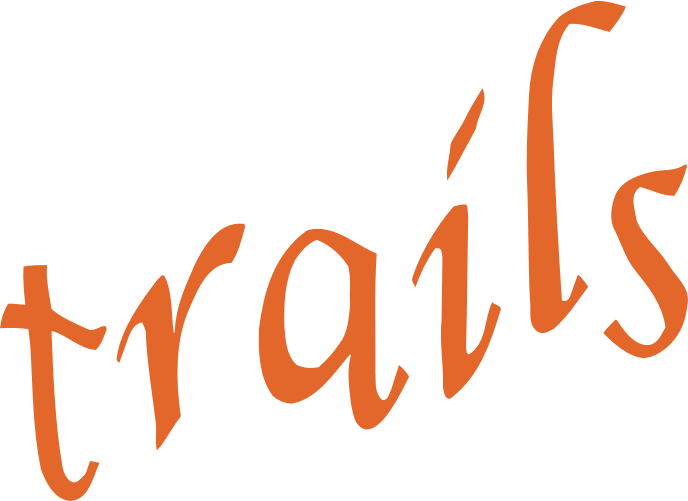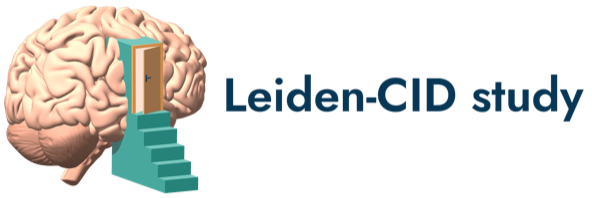-
measure Revised Conners' Parent Rating Scale Short Form (CPRS-R:S)
Study: Netherlands Twin Register Mode of collection: SelfAdministeredQuestionnaire Available measurements: Young Netherlands Twin Register YS_7 YS_10 YS_12 YC_BS1 YC_BS2 YE_ATTEF2 YC_ADHMRIThe 27-item Short Form of the Revised Conners' Parent Rating Scale (CPRS-R:S) measures social, emotional, behavioral, and academic problems in children and adolescents aged 8 to 18 years old with a focus on ADHD and related behaviors. It includes the Oppositional, Cognitive Problems, Hyperactive-Impulsive, and ADHD Index subcales.Created October 17, 2024 • Updated October 20, 2024 -
measure Strengths and Weaknesses of Attention-Deficit/Hyperactivity Disorder Symptoms...
Study: Netherlands Twin Register Mode of collection: SelfAdministeredQuestionnaire Available measurements: Young Netherlands Twin Register YC_DSC YE_ATTEF2 YC_ADHMRIThe Strengths and Weaknesses of Attention-Deficit/Hyperactivity Disorder Symptoms and Normal Behavior Scale (SWAN) is an 18-item parent questionnaire for children and adolescents under 18 years old. This rating scale includes positive “weaknesses” and negative “strengths” scoring, assessing symptoms of Attention-Deficit/Hyperactivity Disorder.Created October 17, 2024 • Updated October 20, 2024 -
measure Early Adolescent Temperament Questionnaire - Revised (EATQ-R)
Study: Generation R Mode of collection: SelfAdministeredQuestionnaire Available measurements: Generation R 13-14 yearsThe Early Adolescent Temperament Questionnaire (EATQ) is designed to specifically tap experiences common to adolescents, and is available in self- and parent-report formats. It assesses temperament and self-regulation via adaptation of scales used in studies of children and adults. It has 10 subscales: Activation Control (the capacity to perform an action...Created October 17, 2024 • Updated October 20, 2024 -
measure Difficulties in Emotion Regulation Scale (DERS)
Study: RADAR Mode of collection: SelfAdministeredQuestionnaire Available measurements: Old Cohort RO - W10
Young Cohort RY - W2 RY - W3 RY - W4 RY - W5 RY - W6 RY - W7The Difficulties in Emotion Regulation Scale (DERS) assesses aspects of emotion regulation, such as emotional awareness, emotional clarity, impulse control, difficulties with goal-directedness etc. , as a self-report questionnaire.Created October 17, 2024 • Updated October 20, 2024 -
measure Adult Temperament Questionnaire (ATQ)
Study: TRAILS Mode of collection: SelfAdministeredQuestionnaire Available measurements: Population cohort POP - T2
Clinical cohort CC - T2The Adult Temperament Questionnaire (ATQ) is a 77-item questionnaire that measures self-reported effortful control, negative affect/neuroticism, extraversion/surgency, and orienting sensitivity. Each item is scored on a 7-point Likert-scale.Created October 17, 2024 • Updated October 20, 2024 -
measure Early Adolescent Temperament Questionnaire (EATQ)
Study: TRAILS Mode of collection: SelfAdministeredQuestionnaire Available measurements: Population cohort POP - T1 POP - T3 POP - T4 POP - T5
Clinical cohort CC - T1 CC - T3 CC - T4 CC - T5The Early Adolescent Temperament Questionnaire (EATQ) is designed to specifically tap experiences common to adolescents, and is available in self- and parent-report formats. It assesses temperament and self-regulation via adaptation of scales used in studies of children and adults. It has 10 subscales: Activation Control (the capacity to perform an action...Created October 17, 2024 • Updated October 20, 2024 -
measure Bangor Gambling Task
Study: TRAILS Mode of collection: MeasurementsAndTests Behavioral/cognitive task Available measurements: Population cohort POP - T3
Clinical cohort CC - T3The Iowa and Bangor Gambling Tasks are psychological tasks thought to simulate real-life decision making. It measures an individual's approach to risk-taking, impulsivity, and ability to delay short-term gratification to achieve long-term rewards. The Bangor Gambling Task is a simplified version of the Iowa Gambling Task.Created October 17, 2024 • Updated October 20, 2024 -
measure NEO Personality Inventory (NEO-PI-R)
Study: TRAILS Mode of collection: SelfAdministeredQuestionnaire Available measurements: Population cohort POP - T3 POP - T5
Clinical cohort CC - T3 CC - T5The NEO Personality Inventory (NEO) is a personality inventory that assesess different dimensions of personality. Most versions focus on the Big Five personality traits Neuroticism, Emotional Stability, Extraversion, Openness to Experience, Agreeableness, and Conscientiousness. Different versions are available that differ in number of items and sub scales.Created October 17, 2024 • Updated October 20, 2024 -
measure Early Adolescent Temperament Questionnaire - Effortful control (EATQ-EC)
Study: L-CID Mode of collection: SelfAdministeredQuestionnaire Available measurements: Early Childhood Cohort ECC - T6-Covid
Middle Childhood Cohort MCC - T3 MCC - T4 MCC - T5 MCC - T5-Covid MCC - T6 MCC - T7The Early Adolescent Temperament Questionnaire (EATQ) is designed to specifically tap experiences common to adolescents, and is available in self- and parent-report formats. It assesses temperament and self-regulation via adaptation of scales used in studies of children and adults. It has 10 subscales: Activation Control (the capacity to perform an action...Created October 17, 2024 • Updated October 20, 2024 -
measure Social Delay Discounting Task (SDDT)
Study: L-CID Mode of collection: MeasurementsAndTests Behavioral/cognitive task Available measurements: Middle Childhood Cohort MCC - T7The Social Delay Discounting Task (SDDT) aims to measure impulse control in a social context. In the task, the child is asked first to choose between a small amount of money now or a larger amount later. Next, the child is presented with a choice between receiving a smaller amount of money for themselves immediately or a larger amount for a friend at a...Created October 17, 2024 • Updated October 20, 2024 -
measure Strengths and Difficulties Questionnaire (SDQ)
Study: L-CID Mode of collection: SelfAdministeredQuestionnaire Available measurements: Early Childhood Cohort ECC - T1 ECC - T2 ECC - T3 ECC - T4 ECC - T5 ECC - T6 ECC - T6-Covid
Middle Childhood Cohort MCC - T1 MCC - T2 MCC - T3 MCC - T4 MCC - T5 MCC - T5-Covid MCC - T6 MCC - T7The Strengths and Difficulties Questionnaire (SDQ) is a brief questionnaire for assessing the psychosocial adjustment of children and adolescents. Versions are available for parents and teachers of 4- to 16-year-olds, and a nearly identical version can be completed independently by 11- to 16-years olds. The SDQ differs from related instruments in that it...Created October 17, 2024 • Updated October 20, 2024 -
measure Early Adolescent Temperament Questionnaire - Discomfort, Fear, Perceptual sen...
Study: L-CID Mode of collection: SelfAdministeredQuestionnaire Available measurements: Middle Childhood Cohort MCC - T4 MCC - T6 MCC - T7The Early Adolescent Temperament Questionnaire (EATQ) is designed to specifically tap experiences common to adolescents, and is available in self- and parent-report formats. It assesses temperament and self-regulation via adaptation of scales used in studies of children and adults. It has 10 subscales: Activation Control (the capacity to perform an action...Created October 17, 2024 • Updated October 20, 2024 -
measure Strengths and Difficulties Questionnaire (SDQ)
Study: YOUth Mode of collection: SelfAdministeredQuestionnaire Available measurements: Baby and Child 3 years 6 years
Child and Adolescent 9 years 12 yearsThe Strengths and Difficulties Questionnaire (SDQ) is a brief questionnaire for assessing the psychosocial adjustment of children and adolescents. Versions are available for parents and teachers of 4- to 16-year-olds, and a nearly identical version can be completed independently by 11- to 16-years olds. The SDQ differs from related instruments in that it...Created October 17, 2024 • Updated October 20, 2024 -
measure Stop-signal anticipation task - functional MRI
Study: YOUth Mode of collection: MeasurementsAndTests MRI Available measurements: Child and Adolescent 9 years 12 yearsStop-signal anticipation task - functional MRI consists of a functional Magnetic Resonance Imaging (fMRI) scan that was acquired while subjects performed the Stop-signal anticipation (inhibition) experiment. The task aims to measure performance and brain activity during actual stopping as well as during the anticipation of stopping. Trials begin with the...Created October 17, 2024 • Updated October 20, 2024 -
measure Early Adolescent Temperament Questionnaire-Revised (EATQ-R)
Study: YOUth Mode of collection: SelfAdministeredQuestionnaire Available measurements: Child and Adolescent 9 years 12 yearsThe Early Adolescent Temperament Questionnaire (EATQ) is designed to specifically tap experiences common to adolescents, and is available in self- and parent-report formats. It assesses temperament and self-regulation via adaptation of scales used in studies of children and adults. It has 10 subscales: Activation Control (the capacity to perform an action...Created October 17, 2024 • Updated October 20, 2024 -
measure Brief Barrat Impulsivity Scale (Brief-BIS) and risk behavior (substance (ab)use)
Study: YOUth Mode of collection: SelfAdministeredQuestionnaire Available measurements: Child and Adolescent 9 years 12 yearsThe Barratt Impulsivity Scale (Brief-BIS) is a commonly used self-report scale for the assessment of the personality construct of impulsiveness. It measures 3 theoretical subtraits, namely, attentional, motor, and non-planning impulsiveness.Created October 17, 2024 • Updated October 20, 2024 -
measure Delay Discounting - hypothetical
Study: YOUth Mode of collection: MeasurementsAndTests Behavioral/cognitive task Available measurements: Child and Adolescent 9 years 12 yearsThe Delay Discounting task is the most widely used paradigm to measure the capacity to wait for a hypothetical monetary reward in children between 8-18 years old. A child is given a series of option between a variable immediate monetary reward and 10 Euros after a certain delay. The delay of the 10 Euro reward varies between 2, 30, 180, or 365 days. Each...Created October 17, 2024 • Updated October 20, 2024 -
measure Stop-signal anticipation task
Study: YOUth Mode of collection: MeasurementsAndTests Behavioral/cognitive task Available measurements: Child and Adolescent 9 years 12 yearsThe Stop-signal anticipation task aims to measure performance during actual stopping as well as during the anticipation of stopping. Trials begin with the presentation of a cue (0, * or **), representing the stop-signal probability (0, 22 and 33% respectively). Permanently visible are three horizontal white lines, and the goal is to stop a rising bar as...Created October 17, 2024 • Updated October 20, 2024






